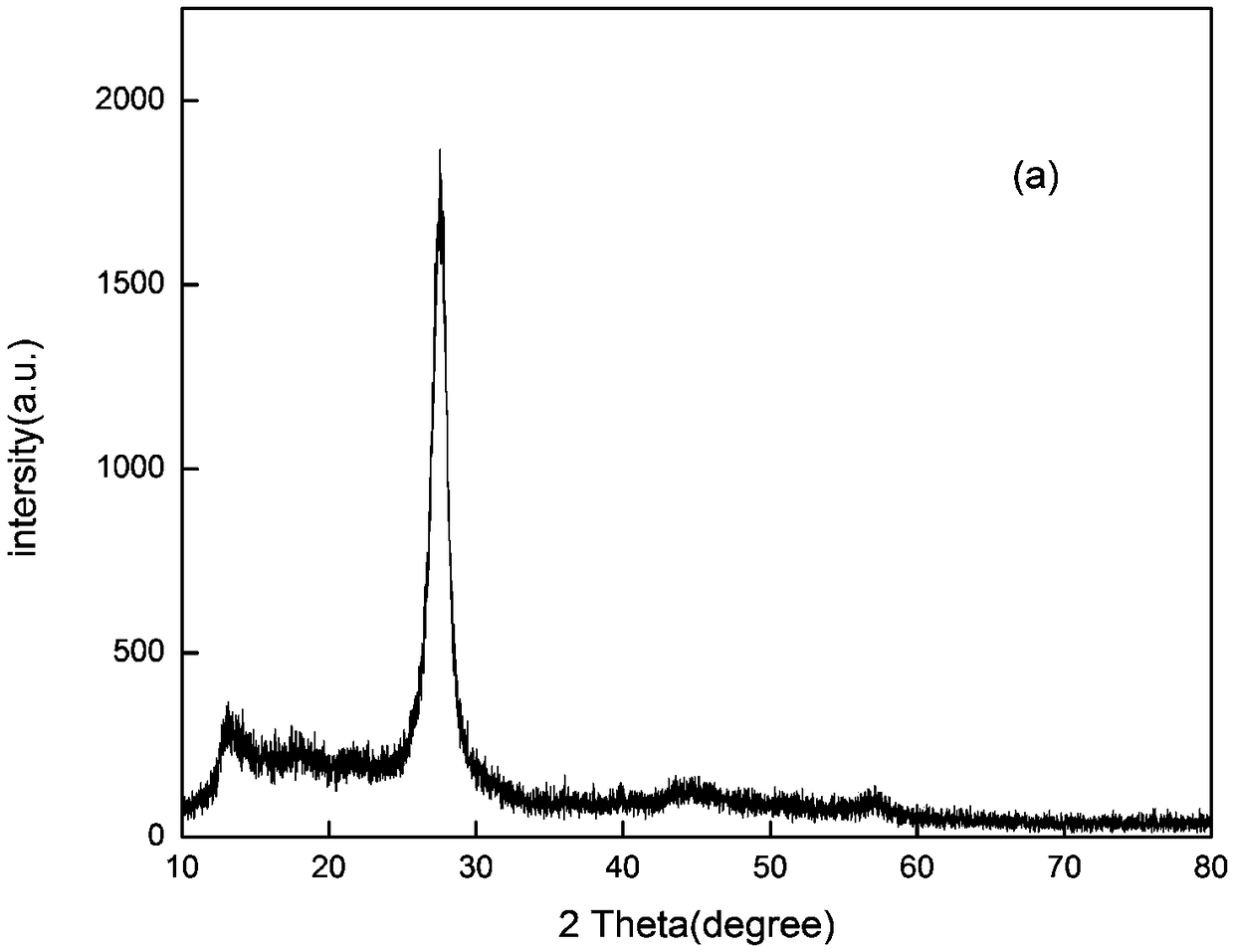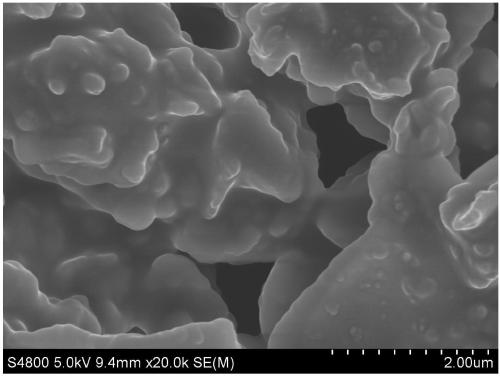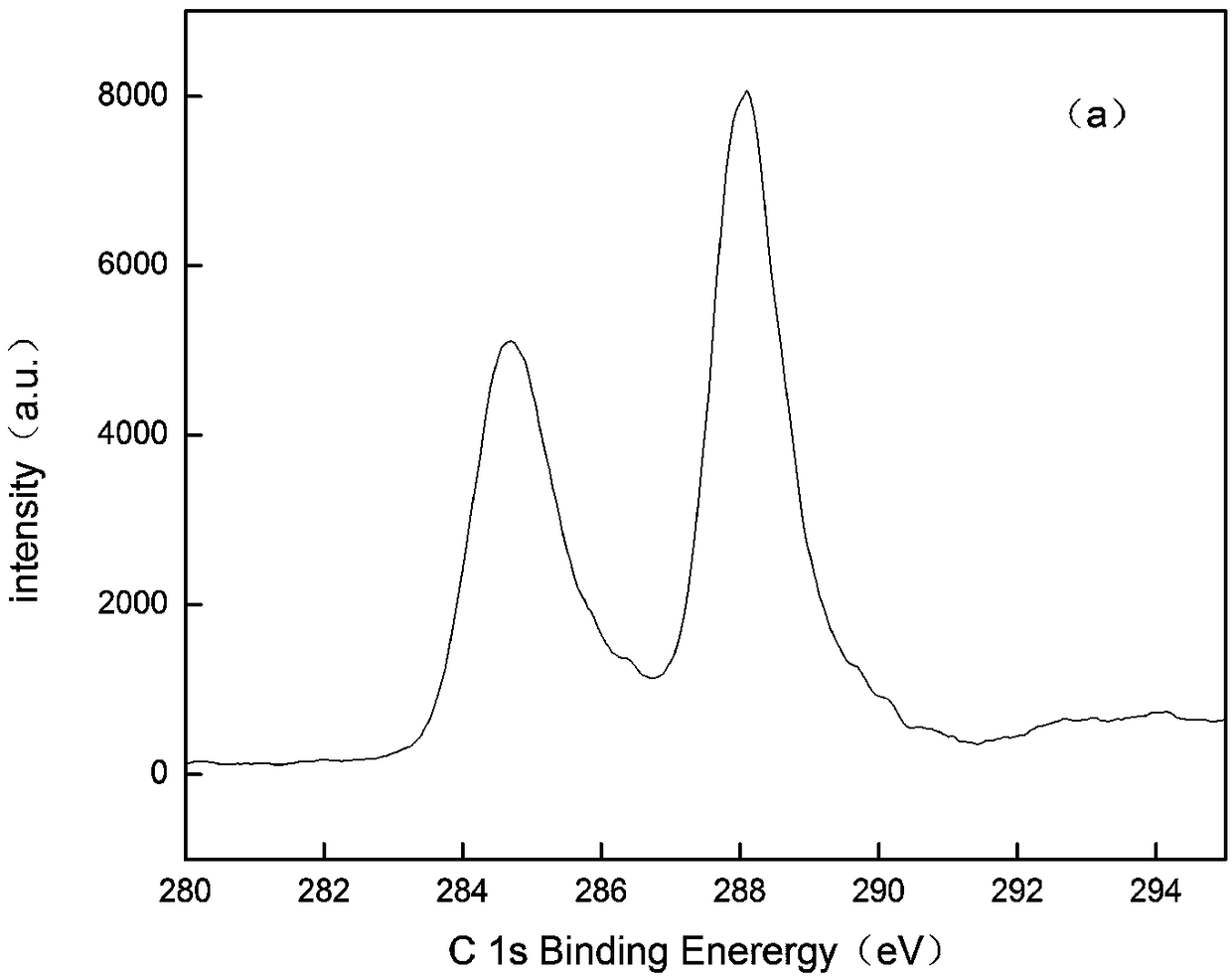Preparation method and application of porous carbon-rich g-C3N4 photocatalyst
A photocatalyst, g-c3n4 technology, applied in the field of photocatalytic materials, can solve the problems of low photocatalytic efficiency, application limitation, low surface area, etc.
- Summary
- Abstract
- Description
- Claims
- Application Information
AI Technical Summary
Problems solved by technology
Method used
Image
Examples
Embodiment 1
[0028] Pure g-C3N4 photocatalyst of embodiment 1
[0029] (1) Preparation method
[0030] Measure 2.52 grams of melamine into an alumina crucible, transfer it to a muffle furnace, and bake it at 550°C for 4 hours in an air atmosphere (the heating rate is 5°C.min-1) to obtain pure g-C3N4 photocatalyst.
[0031] (2) Detection
[0032] figure 1 It is the XRD detection of pure g-C3N4 photocatalyst sample. Depend on figure 1 It can be seen that two diffraction peaks appear at 13.1 degrees and 27.4 degrees, corresponding to the (002) and (100) crystal planes of g-C3N4 respectively. It can be seen from the figure that the sample has good crystallinity.
[0033] figure 2 SEM detection for pure g-C3N4 photocatalyst samples. Depend on figure 2 It can be seen that pure g-C3N4 shows a typical block structure, and the sample does not show the existence of pores in the SEM image.
[0034] image 3 It is the XPS detection of pure g-C3N4 photocatalyst sample. Depend on image 3 I...
Embodiment 2
[0036] Example 2 Porous carbon-rich g-C3N4 photocatalyst
[0037] (1) Preparation method
[0038] 1) Add 2.52 g of melamine solid and 0.1512 g of activated carbon powder into 50 ml of absolute ethanol, stir for 2 h until uniformly mixed, and then transfer to an oven for 14 h after ultrasonication for 30 min to obtain a gray intermediate product.
[0039] 2) Grind the obtained gray intermediate product, put it into an alumina crucible, transfer it to a muffle furnace, and in an air atmosphere, bake it at 550°C for 4h (heating rate of 5°C per minute) to obtain g-C3N4 powder.
[0040] 3) After grinding the g-C3N4 powder with amorphous nano-carbon particles again, it is annealed in a muffle furnace at 470 ° C for 2 h (heating rate 5 ° C per minute), and the porous carbon-rich g-C3N4 photocatalyst .
[0041] (2) Detection
[0042] Figure 4 XRD test for porous carbon-rich g-C3N4 samples. Depend on Figure 4 It can be seen that the sample has good crystallinity, as shown in t...
Embodiment 3
[0046] Example 3 Application of porous carbon-rich g-C3N4 photocatalyst (modified precursor g-C3N4)
[0047] The porous carbon-rich g-C3N4 photocatalyst prepared in Example 2 was subjected to a photocatalyst material performance test.
[0048] The method is as follows: 0.05 g of pure g-C3N4 and porous carbon-rich g-C3N4 were weighed and added to 50 ml of rhodamine B solution with a mass fraction of 10 mg / L, and stirred for 30 minutes in the dark to make them fully contact. With a 300W xenon lamp as the light source, adjust the photocurrent to 20mA, adjust the center of the light intensity to irradiate the sample surface, fix the position, mix the pure g-C3N4 rhodamine B solution and the mixed porous carbon-rich g-C3N4 rhodamine respectively Put the B solution under the light source, take 2ml of Rhodamine B every 20 minutes, and test the absorbance of the sample to prove the degradation of Rhodamine B.
[0049] The result is as Figure 8 As shown, after 20 minutes of light ir...
PUM
 Login to View More
Login to View More Abstract
Description
Claims
Application Information
 Login to View More
Login to View More - R&D
- Intellectual Property
- Life Sciences
- Materials
- Tech Scout
- Unparalleled Data Quality
- Higher Quality Content
- 60% Fewer Hallucinations
Browse by: Latest US Patents, China's latest patents, Technical Efficacy Thesaurus, Application Domain, Technology Topic, Popular Technical Reports.
© 2025 PatSnap. All rights reserved.Legal|Privacy policy|Modern Slavery Act Transparency Statement|Sitemap|About US| Contact US: help@patsnap.com



